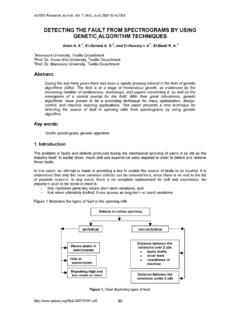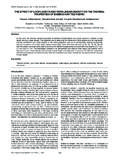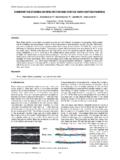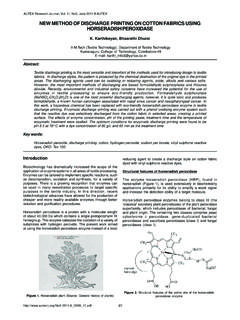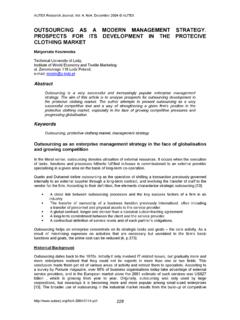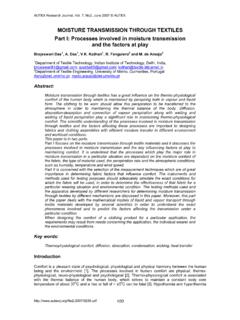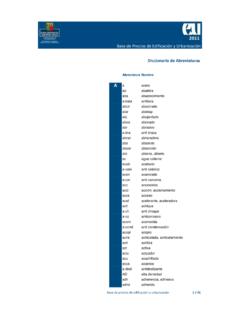Transcription of MICROFIBRES, MICROFILAMENTS & THEIR APPLICATIONS - …
1 AUTEX Research Journal, Vol. 7, No3, September 2007 AUTEX 148 MICROFIBRES, MICROFILAMENTS & THEIR APPLICATIONS Sandip V. Purane, Narsingh R. Panigrahi Department of Textile Technology, SGGS Institute of Engineering & Technology, Nanded-431606. Maharashtra, India. Abstract This article is a review which concerns microfibres, THEIR classification, manufacturing methods, different fibre forms, general properties, as well as THEIR various APPLICATIONS . A brief attitude related to economical problems and future prospects is presented. Key words: microfibre, microfilament, manufacturing methods, fiber cross-section. Introduction The growing demand to increase the fibre properties hitherto known, and to create new sophistical application fields for textile materials have been the causes of the rapid growth of microfibre technology and the rising potential for the textile industry.
2 Microfibres are half the diameter of a fine silk fibre, one-third the diameter of cotton, one-quarter the diameter of fine wool, and one hundred times finer than human hair. In order to be classified as a microfibre, the fibre must be less than 1 dtex in width. Fabrics made from microfibres are generally lightweight, resist wrinkling, have a luxurious drape and body, retain shape, and resist pilling. They are also relatively strong and durable in relation to other fabrics of similar weight, and they are more breathable and more comfortable to wear. A microfibre is defined as a fibre (including staple fibres and filaments) of linear density approximately 1 dtex or less, and above dtex [1].
3 Even finer fibres are produced, of dtex or less, but these are commonly referred to as super-microfibres. Table 1. shows the relationship between fibre linear density and classification. [3] Fibre count, dtex/f Fibre classification > coarse medium fine fine micro < super-microfibres including nanofibres when THEIR cross-sectional dimmentions are within a range of nm.
4 That is of < or <1 m History of microfibres Japanese fibre manufacturing companies introduced the first micro-denier products during the 1970s [4]. Then followed the developments in Europe during the 1980s, and since the 1990s American fibre manufacturers have been following suit. At present, polyester and nylon are generally used for manufacturing microfibres. However, micro-denier versions of rayon and acrylic products are on the horizon. For as long as microfibre technology has been around, ultra-microfibre technology has existed as well. These are fibres that are less than , and especially within the range of Several different processes can be used to make these fibres, all involving the splitting of a larger fibre into many smaller ones.
5 AUTEX Research Journal, Vol. 7, No3, September 2007 AUTEX 149 Production of microfibres Microfibres are generally considered to be fibres with a linear density of less than dtex [2]. Although the technology for microfibre production has been available for many years now, strong demand for these fibres did not begin until the 1980s. The currently available microfibres are different from ordinary fibres mainly in THEIR dimensions, but have much lower property differences than the standard fibres. Toray was the first company in the world to introduce microfibres, followed by Teijin, Hoechst, ICI, DuPont, and others.
6 Recently Toray has introduced an ultra-fine polyester microfibre with a linear density of filament of about dtex. This may be called the finest synthetic fibre so far produced commercially. Quality of the chips for microfibre Demands on polymer quality during the production of microfibres are very stringent. For example, the polyester composition has to be consistent and it should not contain foreign matter. [2] The molecular weight distribution should also be narrow and short-term viscosity must be kept as consistent as possible. Polymer chips need to be smooth, tailless and identical in shape/size. As microfibres are a high-value product, the use of off-quality chips should be avoided, as they would otherwise cause undue problems in processing.
7 It is advisable to use chips of the best available quality for the production of microfibres. It is also important to maintain the quality of the product in all subsequent steps. The drying process should be as consistent as possible, and chips must have an even residence time. The moisture regained of the dried chips should be less than , to minimise the hydrolytic degradation in molten stage. Thus specifying the precise moisture level in the dried chips is essential for trouble-free production of microfibres. For drying quality chips, a continuous drying process is better than batch drying. Manufacturing of microfibres The technology involved in the extrusion of microfibres is more sophisticated and costly than that of conventional deniers.
8 Microfibres are delicate yarns that require great care in handling during textile mill processing. [1] There are various methods of producing microfibres, including modified conventional spinning. All three conventional spinning methods, namely melt spinning, wet spinning, and dry spinning can be employed to manufacture microfibres. For this method, carefully selected polymerisation, polymer spinning and drawing conditions are required. Polyester, nylon, and acrylic microfibres may be manufactured by this method. The extrusion spinnerets should contain many holes of very fine diameter, each of which will make one uninterrupted filament, in spite of complex thermal and rheological changes.
9 Detailed aspects of the various manufacturing methods are presented in the following chapter. Methods of manufacturing microfibres a) Dissolved type [2] Microfibres of this type are manufactured from bi-component fibres with different types of polymers. Comparatively thick bi-component filaments containing different types of incompatible polymers are spun, and the fabric is made using them. When the fabric is treated chemically with solvent, one component is dissolved and removed, and the other component remains as the microfibre. Polyester and nylon microfibres can be made by this method. Commercial production has been reported to use 20/80% ratios of soluble/insoluble polymers to produce a bi-component filament of up to 2 dtex fineness, and a final dissolved filament with linear density of about dtex.
10 The main considerations for selection of suitable polymer component are: high solubility; stability at extrusion temperature; the polymers rheological properties should be compatible at extrusion temperature; it should be recoverable for use, so that the cost of solvent and soluble polymer is affordable; AUTEX Research Journal, Vol. 7, No3, September 2007 AUTEX 150 it should be non-toxic, non-corrosive, and non-polluting. The various combinations of soluble/insoluble polymers reported to form fibres successfully are polystyrene/polyamide and polystyrene/polyester. b) Split type [2] The microfibres of this type are obtained by physically or chemically treating the bi-component filaments containing two types of polymers and splitting them into different types of filaments.
